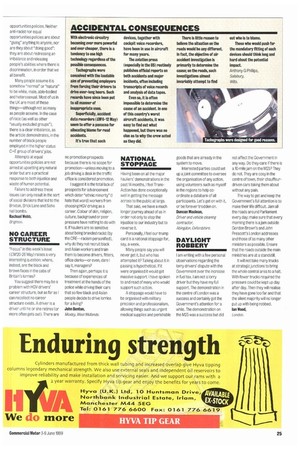ACCIDENTAL CONSEQUENCES
Page 27

If you've noticed an error in this article please click here to report it so we can fix it.
With electronic circuitry becoming ever more powerful and ever cheaper, there is a tendency to use high technology regardless of the possible consequences.
Tachographs were conceived with the laudable aim of preventing employers from forcing their drivers to drive over-long hours. Such records have since been put to all manner of inappropriate uses.
Superficially, accident data recorders (CMG-12 May) seem to offer a panacea for allocating blame for road accidents.
Its true that such devices, together with cockpit voice recorders. have been in use in aircraft for many years.
The aviation press (especially in the US) routinely publishes official reports on both accidents and major incidents, often including transcripts of voice records and analysis of data tapes.
Even so, it is often impossible to determine the cause of an accident. In one of this country's worst aircraft accidents, it was easy to find out what happened, but there was no clue as to why the crew acted as they did. There is little reason to believe the situation on the roads would be any different. In fact, the objective of air accident investigation is primarily to determine the cause; on the roads, such investigations almost invariably attempt to find out who is to blame.
Those who would push for the mandatory fitting of such devices should think long and hard about the potential impact.
Anthony G Phillips, Salisbury, Wilts.














































































































